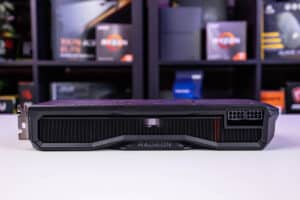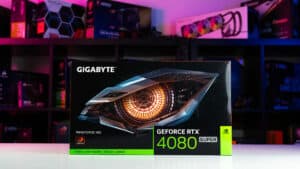Intel finally debuts 5 mobile Arc Alchemist GPUs
Team blue finally enters the ring.
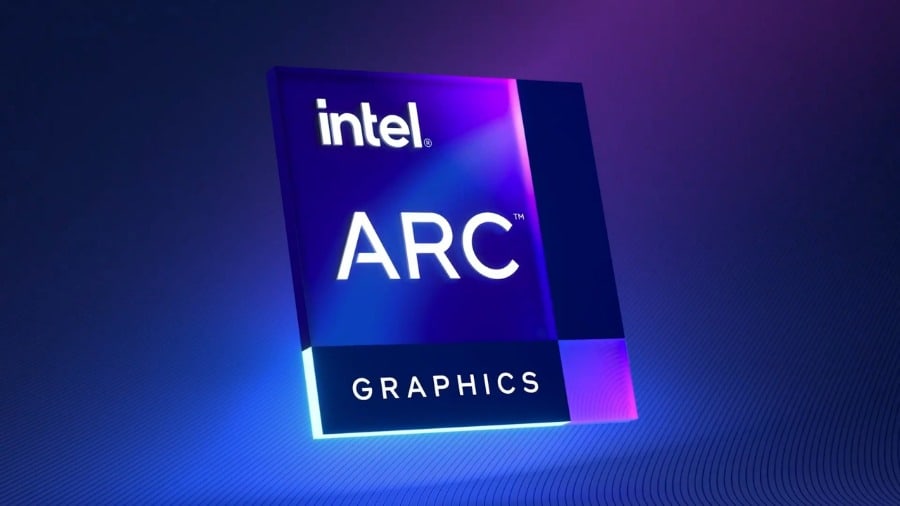
WePC is reader-supported. When you buy through links on our site, we may earn an affiliate commission. Prices subject to change. Learn more
It’s been a long time coming, but Intel has announced their lineup of Arc Alchemist GPUs, their first foray into the consumer graphics card market that has long been dominated by the likes of Nvidia and AMD, with very few who could even attempt to enter into the ring. But, after a long cycle of rumours, we’re finally beginning to see the fruit of Intel’s work in the form of their first consumer graphics chips, which are first set to debut in laptops and mobile devices, before the company makes its eventual push into the desktop market, which is expected later this year.
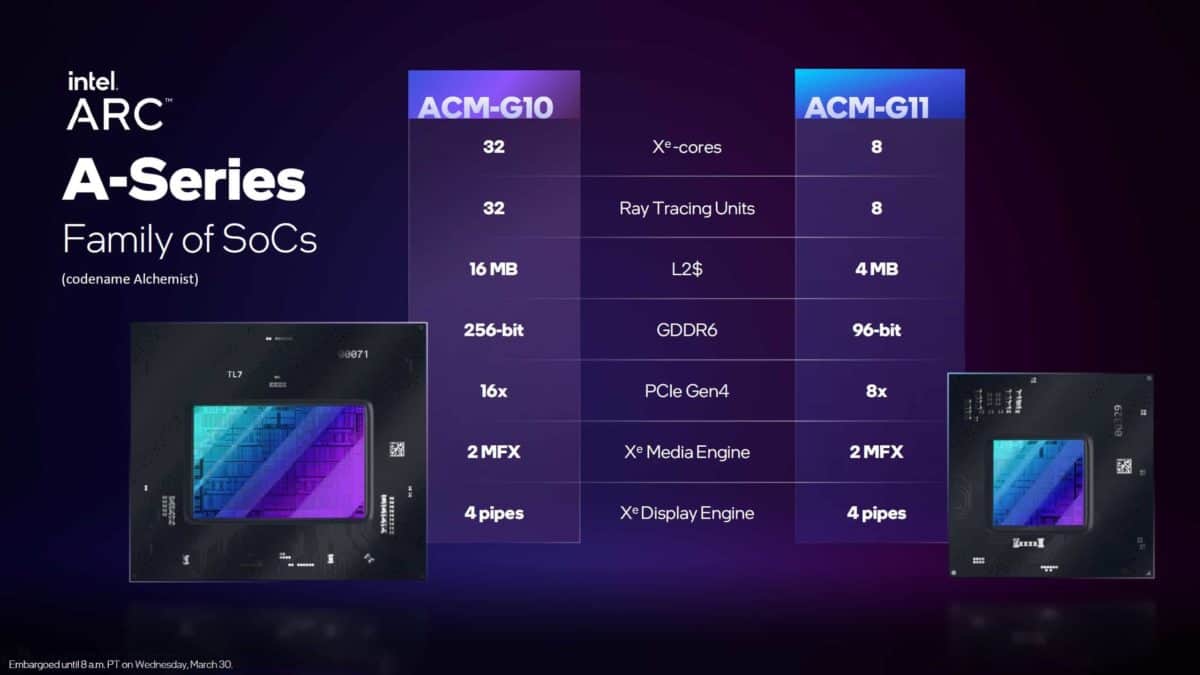
Right now, there are two Intel Arc Alchemist SoCs, the ACM-G10, a higher-end offering, with multiple cutdowns, and a lower-end chip, the ACM-G11. These two SoCs are spread across five chips in total, divided into three discrete categories. These are Intel Arc 3, Arc 5 and Arc 7 respectively, going in line with their naming scheme for processors.
Intel Arc Alchemist Mobile GPUs
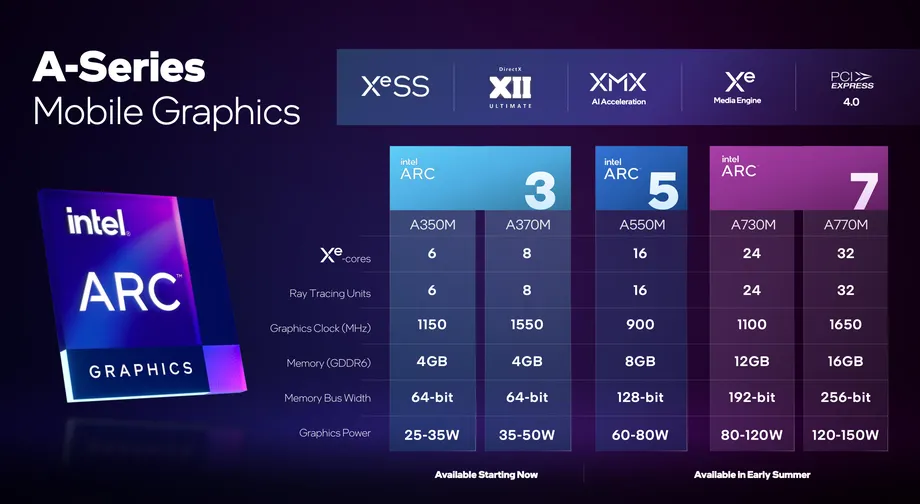
| Intel Arc 3 A350M | Intel Arc 3 A370M | Intel Arc 5 A550M | Intel Arc 7 A730M | Intel Arc 7 A770M | |
| Xe Cores | 6 | 8 | 16 | 24 | 32 |
| Ray Tracing Units | 6 | 8 | 16 | 24 | 32 |
| Graphics Clock (MHz) | 1150 | 1150 | 900 | 1100 | 1650 |
| Memory Capacity (GDDR6) | 4GB | 4GB | 8GB | 12GB | 16GB |
| Memory Bus Width | 64-bit | 64-bit | 128-bit | 192-bit | 256-bit |
| Total Graphics Power (TGP) | 25-35W | 35-60W | 60-80W | 80-120W | 120-150W |
| Availability | March 30 2022 | March 30 2022 | Early Summer | Early Summer | Early summer |
This stack of cards looks formidable, with the Arc 3 chips looking to target a modest 1080p, 60fps, and the higher-end cards going further beyond that, with the horsepower under the hood to be able to achieve that, too. The laptops that will be equipped with these new chipsets will be available later today, and we already know that manufacturers have been dutifully preparing for their impending arrival, too.
Specs across the board rise gradually all the way to the flagship Arc 7 A770M, which boasts a huge amount of power for a mobile chip. However, whether it’ll be able to compete with rivals from Nvidia and AMD still remains to be seen until we’ve got these devices in our hands. At least on paper, these laptops look incredibly competitive, and we can’t wait to get our hands on this gear to put it through its paces ourselves. You can assume that Intel hasn’t been waiting for this long to release a sub-par product, but there will inevitably be growing pains, particularly on the driver side of things to begin with. As the platform matures, so will the drivers, and as a result, you’ll get a smoother, more optimized experience in many titles.
Intel Arc GPU features
Intel promises Xe HPG technology and a media engine that can handle hefty workloads. They also boast DirectX12 Ultimate capability, and a technology known as XeSS, similar to DLSS or FSR to deliver high performance, delivered through AI workloads, which is due to launch this summer, potentially coinciding with the release of the higher-end chips. This is all controlled via Intel Arc Control, where you’ll be able to update and manage your drivers, display settings and much more.
Additionally, the Xe Media Engine will be able to handle a variety of resolutions with these being just a snapshot of what you can expect.
- 2x 8K60 HDR
- 4x 4K120 HDR
- 1080p 360
- 1440p 360
Intel Arc 3 A350M & A370M
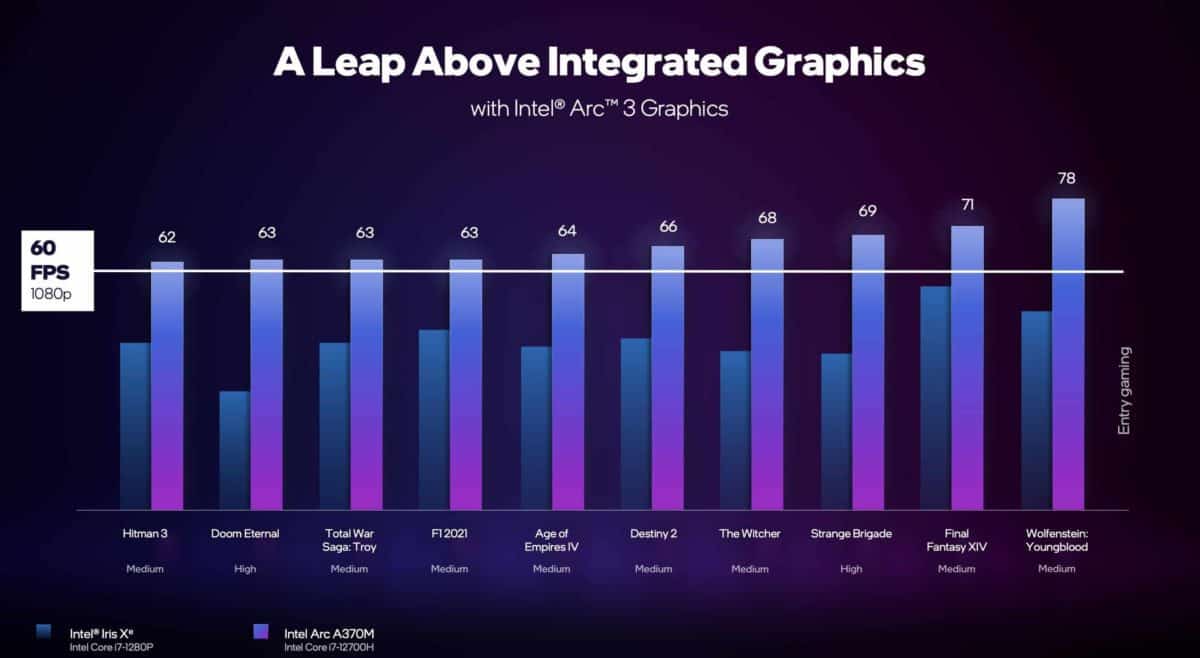
According to our current understanding of Intel’s Arc Alchemist product stack, only the ACM-G11 chips will be available, to begin with, the Intel Arc 3-class chips, the A350M and A370M. While the A350M appears to be a pretty low-powered option, the A370M may have some chops in running modern titles. Curiously, Intel has previously confirmed that the memory bus on these chips is actually 96-bit, but they appear to be using a shorter 64-bit interface, instead. This gives them ample room to further expand the lineup with a refresh down the road for more powerful entry-level components with an expanded bus, and presumably more memory to throw at them, too. It’s going to be quite interesting to see exactly what laptops choose to use both of these chips.
We presume that the A350M will be a shoo-in for many thin and light systems, with its modest TGP, while the A370M will be slightly more powerful, and go up against the likes of the RTX 3050 mobile chips when it comes to real-world performance, while still retaining a decent total power to ensure that battery life is retained in these systems.
Intel Arc 5 A550M
The A550M looks to be the midrange of the entire stack, meaning that you can roughly equate its performance to a competitor like the RTX 3060 Mobile, or the RX6600M. However, these are just estimations, as Intel has not given out any indication as to what performance we might be able to expect quite yet. However, you should see this one plopped into your average ‘gaming’ laptops, meaning that you’ll be able to get decent performance out of the chip, especially if it’s in a chassis that performs well under thermal loads. We can’t wait to hear more about it and put the chip through its paces to see how it manages to stack up against the competition.
It is the most cut down version of the ACM-G10 chip, meaning that it’s likely to have some siblings pop up whenever Intel decides to refresh the lineup. However, this doesn’t mean that it’s a bad chip, just that it’s been limited and binned to an inch of its life when it comes to the specs, and might not be the best chip to purchase if you’re looking to overclock it.
Intel Arc 7 A730M
The Arc A730M looks to be shaping up to be one of the most powerful cards that Intel will release, with performance still up in the air since we have no accurate estimations yet as to exactly what kind of performance this chip will be targeting until closer to release. Regardless, we’re going to plop our estimate at this chip competing against the likes of the extremely formidable RTX 3070 Mobile, and RX6700M chips respectively. You’ll see this chip in higher-end gaming notebooks, offering a somewhat adequate price to performance ratio for the money.
This is the middle sibling in the stack of ACM-G10 chips, so you can expect good performance out of it in both native performance while playing a title that requires Ray Tracing, thanks to its 24 Ray Tracing units on the chip. It’s not quite ready for launch, so we’re due to see this chip release in Summer 2022.
Intel Arc 7 A770M
Being the flagship chip, you can expect the Arc A770M to go head to head with the biggest and best mobile graphics chips on the market. Though Intel has not yet specified exactly what kind of performance you’ll be able to expect while using the chip. It’s maxed out specs, with a larger TGP than the rest of the stack means that more power is going to result in higher framerates for any games that you might want to run on the system. With 16GB of VRAM under the hood, you might even expect this card to push to higher resolutions, to boot, meaning that you’re not going to be leaving any performance on the table while using this chipset.
When is Intel going to announce desktop Arc Alchemist GPUs?
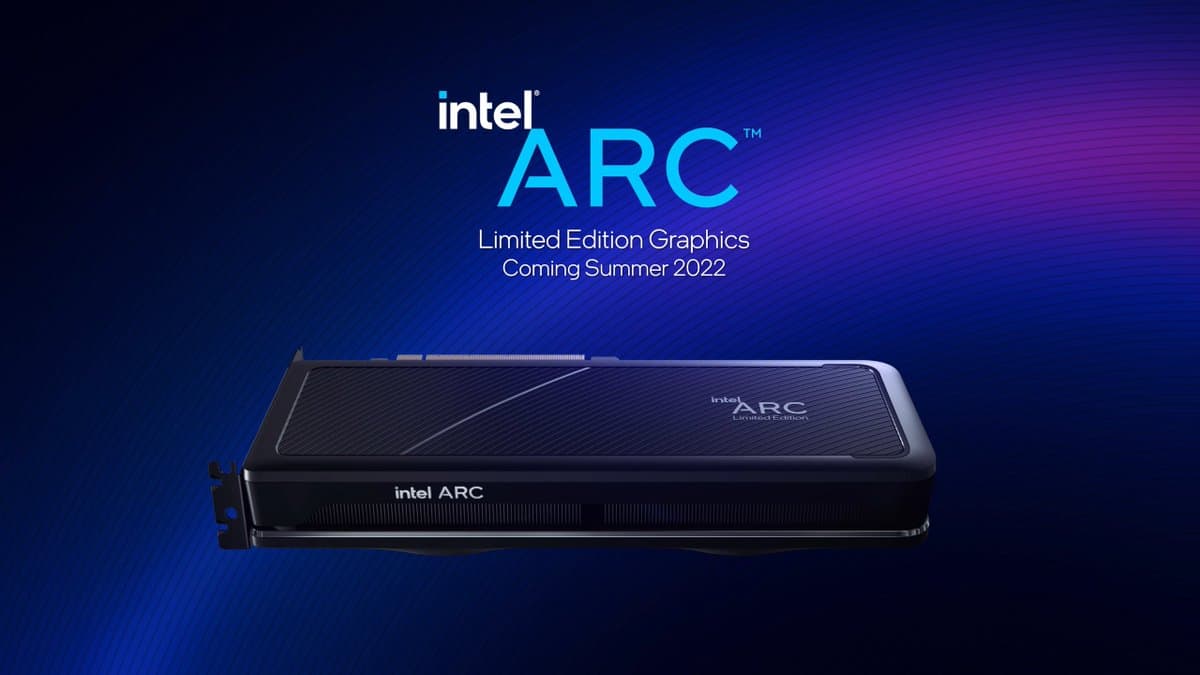
We expect to see Intel formally announce their desktop Arc Alchemist chips around Summer 2022. This is because they will want a slice of the pie when it comes to the fall season, and the holiday shopping period. It’s possible that we will see these chips announced around Computex 2022, where they will also reveal the final chips, pricing and more. However, don’t expect any more news surrounding that until Intel has managed to fully roll out all of the mobile chips that they are currently primed to release right now, so shift your eyes towards the end of this summer, and the beginning of the fall season, if you might be interested in Intel throwing down the gauntlet to the likes of AMD and Nvidia.




